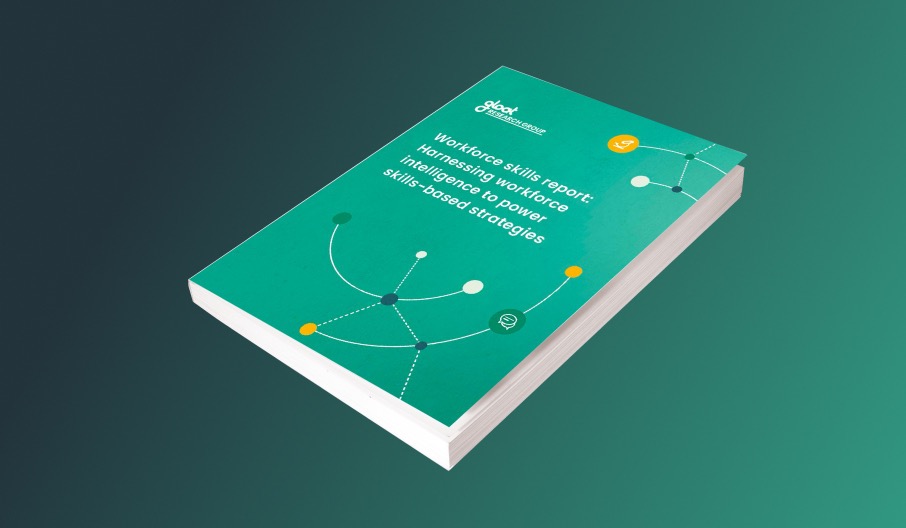How to identify employee skills gaps in the workplace
Learn how to uncover knowledge gaps and put a stop to them, once and for all

Far from a rarity, skill gaps are quickly becoming common in most organizations. In fact, 87% of businesses know they have skill gaps or anticipate that they will have them within the next few years. Despite these impending knowledge shortages, only 40% of employees believe their company offers upskilling opportunities.
To make matters worse, skill gaps are likely to intensify in the years to come. As the pace of technological innovation accelerates and the half-life of skills continues to shrink, organizations may soon find that knowledge gaps are delaying business priorities and slowing output levels.
Rather than letting skill gaps stretch into critical talent shortages that will sabotage bottom lines, there are a few steps leaders can take to put a stop to skill gaps before they snowball into major crises.
The downfalls of working with skill gaps
Skill gaps are always bad news, both for employees and the businesses they serve. From an employer’s perspective, if an organization doesn’t have the skills needed to complete high-priority tasks efficiently, its bottom line is going to suffer. In the financial sector alone, Korn Ferry estimates that a lack of in-demand skills could cause the industry to lose out on annual revenues of $1.3 trillion by 2030.
To combat these shortages, leaders will need to either recruit new talent with the skills they’re looking for or develop talent internally. The former option typically comes with a high price tag, with University of Pennsylvania research estimating that external hires cost 18-20% more than talent promoted from within an organization.
At the same time, employees who don’t learn new skills are at risk of falling behind and eventually losing their value to their employer. Given how fast technology is accelerating—especially with recent AI innovations—employees must constantly learn new skills to stay employable. Dynamically learning new competencies is a skill unto itself and it’s something all workers will need to develop to be successful in the new world of work.
How to identify skill gaps in the workplace
To identify skill gaps, compare existing employee skills with those required for current roles or future goals. Use assessments, performance data, manager feedback, and skills mapping tools to highlight missing capabilities. This analysis supports training plans, talent development, and strategic workforce decisions.
#1. Conduct a skill gap analysis
Before leaders can begin bridging skill gaps, they must take stock of all the capabilities their people have as well as existing knowledge gaps—which is where a workforce skill gap analysis comes into play. Conducting a skill gap analysis helps executives pinpoint which learning and development initiatives should be prioritized, such as additional technical training to bridge IT skill gaps. Once HR is aware of any skill gaps, they can start to create strategies to overcome existing knowledge shortages—including hiring externally for new skills or redeploying or reskilling internal talent.
#2. Use skill benchmarking to set goals
Skill benchmarking allows leaders to measure employees’ skills and skill levels and see how they compare to organizational and industry-wide standards. This analysis can help HR and L&D leaders determine whether an employee has the required skill sets and proficiencies to perform a role and identify upskilling opportunities to help bridge any existing knowledge gaps.
Skill benchmarking is a relatively new phenomenon made possible by the rise of skills intelligence tools like Gloat’s Skills Foundation. Prior to this technology, it was very difficult for companies to gain a 360-degree view of skills, let alone explore how these competencies compare to other organizations in the same industry. As skills intelligence tools go mainstream, more organizations can evaluate their workforce’s capabilities against the competencies another company within the same industry has and adjust their skill-building strategies accordingly.
#3. Conduct performance reviews
After completing a skill gap analysis and using skills intelligence tools for skill benchmarking, managers will be equipped with the insights needed to have an informed, honest discussion with employees about their skills and the knowledge they should hone next to progress in their roles.
Managers can use skill benchmarking to understand where an employee’s competencies might be falling short, depending on their role, industry, and level of seniority. Once these potential gaps are identified, managers and employees can come together to align on a path forward that will enable the employee to acquire all the skills expected of someone in their position.
#4. Give employees a chance to share their feedback
As leaders and managers set out to turn their skill-building strategies into realities, they can’t lose sight of their employees’ perspectives and the crucial role they play in bridging organizational knowledge gaps.
If employees feel like their goals and aspirations are not taken into account during performance conversations and reflected in their training and development plans, they will be much less motivated to work on building new skills. Ideally, managers and employees will have an open conversation where they each discuss the skills they’re hoping to prioritize, based on business needs and career goals. Some companies may introduce AI-powered career pathing tools to help facilitate these conversations and empower employees to grow their skills so they can eventually move into their dream roles within their organization.
#5. Prioritize experiential learning
Once skill gaps have been identified and managers and employees have aligned on learning priorities, leaders should empower their workforce to begin proactively acquiring new expertise. While educational courses and training are crucial components of upskilling and reskilling, employees can’t just read or watch something to become knowledgeable about it.
Instead, L&D content should be paired with opportunities to put the lessons employees are learning into practice. By generating suggestions for projects, gigs, and mentorships based on the skills employees wish to learn, talent marketplaces increase access to career development opportunities and help workers bridge knowledge gaps.
To learn more about the tools and tactics leaders are harnessing to embrace skills-based strategies, check out our research report on workforce skills.





